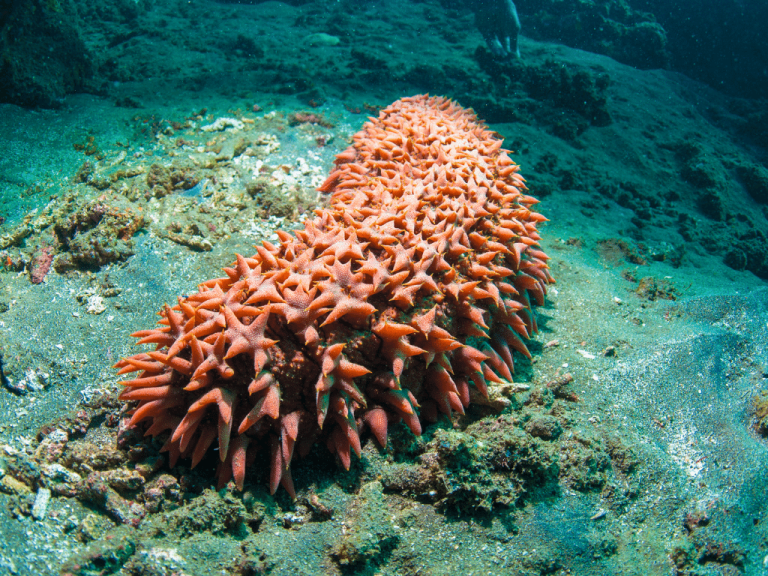In the crevices of seaweed-dense underwater rocks lives an animal that looks like a cucumber and is covered in fleshy spines. This is the famous delicacy known as sea cucumber.
In the ocean, sea cucumbers move using their tube feet and muscle contractions, much like snails on land. They move very slowly, covering only about three meters in an hour. So what happens when a predator approaches? No need to worry. Despite their clumsy appearance, sea cucumbers have a very clever trick up their sleeves. When threatened by a predator, they calmly perform a “self-evisceration” by expelling their sticky, elongated intestines through their anus, effectively entangling the predator.
Can sea cucumbers survive after losing their intestines? Yes, they can. In about 50 days, they regenerate new internal organs.
Why don’t sea cucumbers die after expelling their intestines?
It turns out that sea cucumbers have a type of connective tissue in their bodies. Connective tissue is made up of countless cells that are similar in shape and structure, working together to perform physiological functions. Sea cucumber connective tissue exists in two states: functional and regenerative. The functional state is when the connective tissue carries out physiological functions, while the regenerative state is when it works on regenerating and compensating for damaged or dead cells.
Marine biologists have captured sea cucumbers that have expelled their intestines or have cut them into two pieces and cultivated them in laboratories. Frequent microscopic examinations revealed that their internal connective tissues quickly recover and develop, providing strong evidence of the sea cucumber’s regenerative abilities. This capability is due to the strong transition of their connective tissues into the regenerative state.

